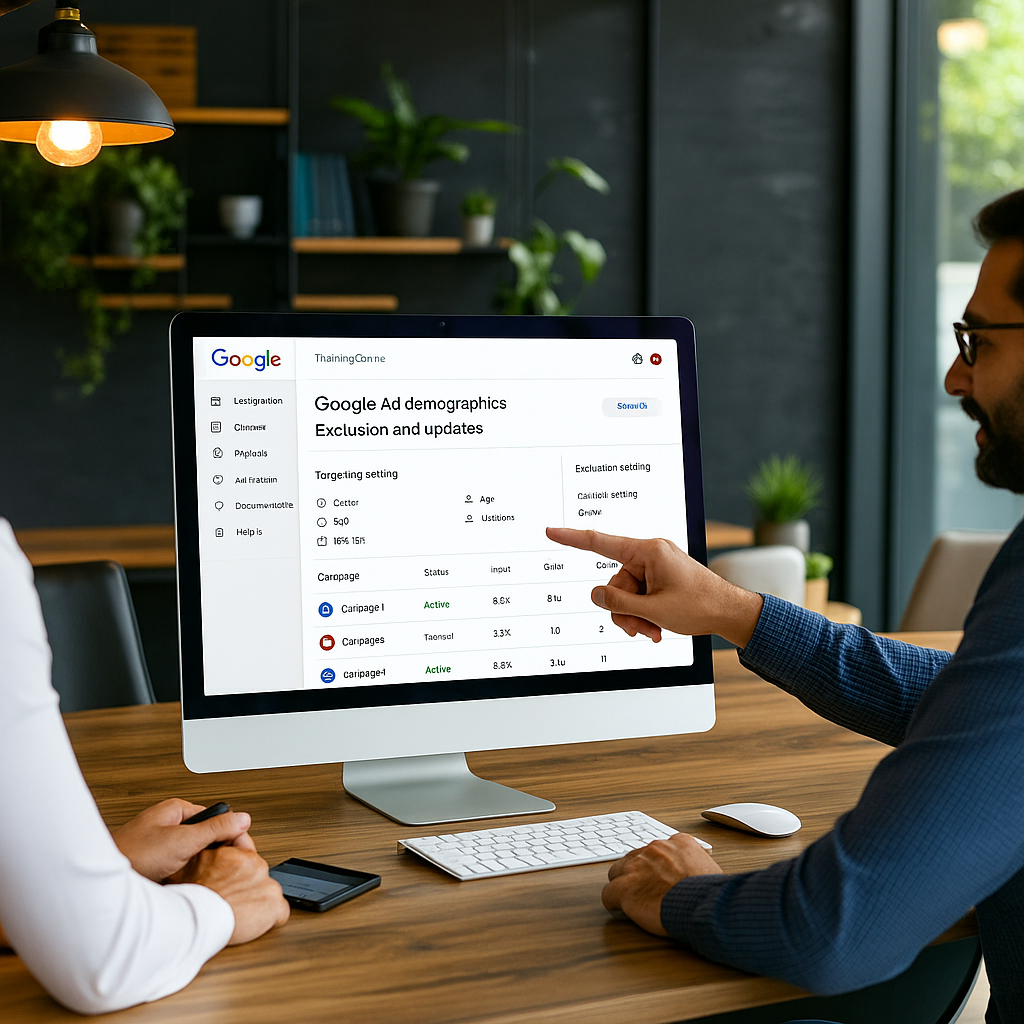Google Ads Demographics Targeting and Exclusion Updates 2025: What Advertisers Need to Know
Google’s upcoming changes to demographics targeting and exclusion in Google Ads will reshape how advertisers reach and refine their audiences. These updates reduce the granularity of demographic data, consolidating or removing narrowly defined age, gender, and household income categories. This shift reflects a stronger focus on user privacy and compliance with evolving data protection standards, requiring advertisers to adjust their strategies to maintain campaign effectiveness.

Understanding the 2025 Changes
The reduction in demographic detail means advertisers will have less precision in targeting specific groups. Exclusion options, especially for campaigns like Shopping and Performance Max, will also be limited, resulting in broader audience pools and less control over filtering demographics. To adapt, marketers will need to rely more on behavioral data, contextual signals, and first-party insights to complement demographic information.
Smart Bidding strategies will become increasingly important, as Google’s algorithms dynamically optimize bids using available demographic signals and real-time performance data. This automated approach helps compensate for the loss of fine-grained targeting by adjusting ad delivery based on campaign results.
Strategic Implications for Advertisers
These updates encourage a more integrated approach to audience segmentation. Combining demographic data with interests, purchase intent, engagement metrics, and contextual targeting can help maintain relevance despite less detailed demographic categories. Advertisers who experiment with diverse targeting combinations and monitor performance closely will be better positioned to navigate the new environment.
The changes also reflect a broader industry movement toward responsible data use, balancing privacy protection with advertising effectiveness. Marketers must embrace tighter privacy constraints while continuing to connect meaningfully with their audiences.
Frequently Asked Questions
How will reduced demographic granularity affect campaign precision?
Campaigns relying on narrowly defined demographic segments may see less targeted reach. However, integrating behavioral and contextual signals can help maintain or improve outcomes.
What is the impact on exclusion capabilities?
Exclusion options will be more limited, especially in Shopping and Performance Max campaigns. Advertisers should leverage Google’s automated bidding and machine learning tools to optimize delivery without manual demographic filtering.
How can advertisers adapt their strategies?
By blending demographic data with first-party insights, behavioral patterns, and contextual signals, marketers can develop a nuanced audience understanding. Testing different targeting mixes and monitoring results will be essential.
What are the privacy and compliance implications?
The updates align with stricter privacy standards, requiring advertisers to operate within tighter data constraints. This shift promotes user trust and encourages innovative, privacy-conscious marketing strategies.
Conclusion
Adapting to Google Ads’ 2025 demographics targeting and exclusion updates means shifting from fine-grained demographic control to a broader, data-driven approach. Leveraging automation, machine learning, and a mix of behavioral and contextual signals will help maintain campaign performance while respecting privacy requirements. This evolution offers new opportunities for reaching audiences effectively through a more comprehensive understanding of customer behavior and intent.
For more details, see the original article on Search Engine Land.













.png)

